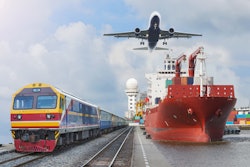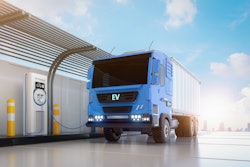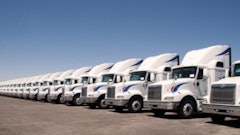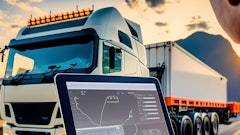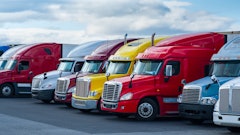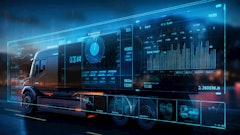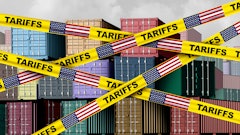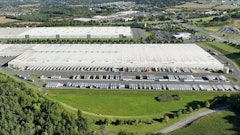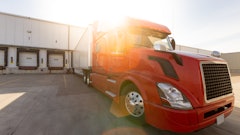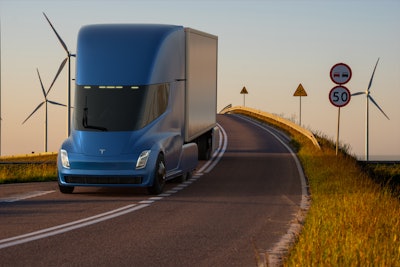
As the trucking industry continues to grow, so too does the need for qualified drivers. However, the industry has been struggling with a driver shortage for years, and the problem only seems to be getting worse. Enter self-driving trucks, or driverless trucks, which have been hailed as a potential solution to this issue. While the technology is still in its early stages, many industry experts are excited about the future of trucking automation and the impact that autonomous trucks could have on the industry.
The impact of the truck driver shortage on the industry
The trucking industry has long been an essential part of the global economy, but it’s currently facing a significant challenge – a shortage of qualified drivers. This shortage has been exacerbated by the COVID-19 pandemic, which has caused disruptions to supply chains, increased demand for certain goods, and put additional pressure on an already-stressed industry.
The shortage of drivers has made it difficult for companies to keep up with demand and meet delivery deadlines. This effect has had a significant impact on the industry, leading to increased costs, longer delivery times, and reduced productivity. As a result, the trucking industry is looking for ways to solve this problem, and self-driving trucks have emerged as a potential solution. Driverless trucks are being thought as a potential solution to this problem, as they could help address the shortage of drivers and increase efficiency and productivity in the trucking industry. While the technology is still relatively new, the future of trucking automation and the impact of autonomous trucks on the industry are topics of much interest and discussion.
The challenge of driver retention
The trucking industry faces not only a shortage of drivers, but also a challenge of driver retention. Many drivers leave the industry due to the demanding nature of the job, including long hours, time away from home, and often inadequate compensation. This has led to high turnover rates and recruitment costs for trucking companies.
Self-driving trucks, or driverless trucks, have been suggested as a potential solution to this challenge, as they would require fewer human drivers and provide a more appealing work-life balance. However, the future of trucking automation and the impact of autonomous trucks on driver retention are not yet clear.
While autonomous trucks may reduce the need for drivers, they also raise concerns about job security and the impact on those who currently work in the industry. As such, it is important to carefully consider the potential benefits and drawbacks of autonomous trucks and their impact on the future of the trucking industry as a whole.
The future of trucking and driverless trucks
Autonomous trucks, or driverless trucks, have been a topic of much discussion in the trucking industry and beyond. With the advancement of technology over the past few years, autonomous trucks have become more of a reality than a mere concept. Some companies have made headlines with their electric and autonomous trucks, which offer increased efficiency, safety, and reduced emissions. While there are still questions and concerns about the impact of autonomous trucks on the industry, their potential for revolutionizing the future of trucking cannot be ignored.
Despite the challenges, the future of trucking automation and the impact of autonomous trucks are being actively explored and researched. As we continue to make strides in technology and innovation, it is likely that the role of autonomous trucks in the future of the trucking industry will become increasingly prominent.
How will trucking automation impact the trucker shortage?
As the development and implementation of autonomous trucks continues, one question on the minds of many in the trucking industry is how trucking automation will impact the ongoing driver shortage. Self-driving trucks have the potential to address the shortage by reducing the number of drivers needed, while also increasing efficiency and productivity. However, the impact of autonomous trucks on the industry and the workforce remains in question. Let’s look at the potential benefits and challenges of self-driving trucks and their impact on the future of trucking.
Here are some potential benefits of self-driving trucks:
- Reduced dependence on human drivers. This could help address the ongoing driver shortage and reduce labor costs.
- Increased efficiency and productivity. Autonomous trucks can operate for longer periods without the need for rest breaks and can take more direct and efficient routes.
- Improved safety. Driverless trucks could potentially reduce the number of accidents caused by human error.
- Reduced emissions. Electric and autonomous trucks could help address environmental concerns and improve air quality.
- Enhanced tracking and logistics capabilities. Self-driving trucks can be equipped with advanced sensors and tracking systems that allow for real-time monitoring and optimization of shipments.
- Increased flexibility and scalability. Autonomous trucks could potentially operate on a 24/7 basis and be quickly re-routed to adapt to changing demand or traffic conditions.
- Potential cost savings for companies. Aside from initial investment, autonomous trucks could potentially reduce fuel consumption and maintenance costs over time.
Here are some potential drawbacks and challenges associated with self-driving trucks:
- Safety concerns. While autonomous technology has the potential to reduce accidents caused by human error, issues with sensors, software malfunctions, and other technical problems could potentially lead to accidents and other safety hazards.
- Technology limitations. While the technology for self-driving trucks has advanced significantly in recent years, there are still limitations and challenges that must be overcome before autonomous trucks can become widely adopted. These include issues with navigation, weather, and other environmental factors that can impact the performance of the technology.
- Job displacement. The widespread adoption of self-driving trucks could potentially lead to job displacement for many truck drivers and other workers in the industry. This could have significant economic and social consequences for affected individuals and communities.
- Regulatory challenges. The introduction of autonomous trucks raises a number of regulatory and legal challenges such as liability, insurance, and licensing.
- Cost and infrastructure challenges. The investment in infrastructure, technology, and training could be a barrier for smaller companies and independent operators who may not have the resources to invest in these areas for driverless trucks.
Overall, the future of trucking automation is a complex issue that requires careful consideration of the potential benefits and drawbacks. While self-driving trucks offer many potential advantages, they also raise concerns about job security and the impact on the existing workforce. As such, it is important to continue to explore and research the potential impact of autonomous trucks on the future of the trucking industry.
Long-term effects of autonomous trucking on the industry
The potential long-term effects of autonomous trucking on the industry are the subject of much debate and speculation. Some experts predict that the widespread adoption of self-driving trucks could bring significant benefits to the industry, including increased efficiency, reduced costs, and improved safety. Others, however, have raised concerns about the impact of autonomous trucks on jobs, labor markets, and local economies.
As self-driving technology continues to develop, it is likely that the trucking industry will see significant changes in the coming years. These changes could include the adoption of new business models, the development of new products and services, and the emergence of new players in the market.
While the long-term effects of autonomous trucking are difficult to predict, the technology has the potential to significantly disrupt the industry and transform the way goods are transported around the world. As a result, industry stakeholders will need to carefully consider the potential benefits and risks of autonomous trucking as they prepare for the future of the industry.
Regulations and policy surrounding autonomous trucking
As the technology for self-driving trucks continues to evolve, policymakers and industry stakeholders are grappling with a range of regulatory and policy questions related to the adoption of autonomous vehicles. These issues include questions about liability, insurance, licensing, and safety standards, among others. While some policymakers and industry leaders have embraced the potential benefits of autonomous trucks, others have expressed concerns about the impact of the technology on jobs, safety, and other areas.
In the United States, federal regulators have taken steps to encourage the development and adoption of autonomous vehicles like the Self Drive Act. The Department of Transportation released guidelines for the safe testing and deployment of autonomous vehicles. Congress considered a range of bills aimed at promoting the development and adoption of self-driving technology. At the same time, states and localities have also taken steps to regulate the use of autonomous vehicles on public roads, raising questions about the potential for a patchwork of regulations that could slow the adoption of the technology.
As the debate over self-driving trucks continues, it is clear that policymakers and industry stakeholders will need to work together to ensure the safe and responsible integration of autonomous vehicles into the trucking industry.
When will driverless trucks become the norm?
The timeline for when driverless trucks will become the norm remains uncertain, with predictions ranging from just a few years to several decades. While there has been significant progress in the development of autonomous technology for trucks, there are still many technical and regulatory challenges that must be overcome before the widespread adoption of self-driving trucks becomes a reality.
Some believe that autonomous trucks will become the norm within the next decade, with significant progress being made in the development of self-driving technology and the introduction of regulations to govern their use. Others, however, suggest that the transition to driverless trucks may take much longer, with a range of technical, social, and economic factors influencing the pace of adoption. Regardless of the timeline, the future of the trucking industry will be shaped by the ongoing development of autonomous technology.
Will self-driving trucks solve the driver shortage?
As the driver shortage continues to impact the trucking industry, there is growing interest in whether self-driving trucks could provide a solution. While there are advantages to self-driving trucks, such as increased efficiency and less dependence on human drivers, there are also concerns about safety, technology readiness, and potential job loss. Some industry experts believe that self-driving trucks could help fill the gap left by the shortage of human drivers, particularly for long-haul routes. However, it is important to consider the potential impact on the industry as a whole, including the need for new regulations and policies, as well as the effects on truckers and their families. The future of trucking automation and the role of self-driving trucks in addressing the driver shortage remains a complex and evolving topic that will require careful consideration and planning.
The future of trucking
Autonomous trucks have the potential to revolutionize the trucking industry. They could improve safety, efficiency, and productivity, and help to address the growing shortage of truck drivers. However, there are still some challenges that need to be addressed before autonomous trucks can become mainstream, such as the cost of the technology and the need for regulations. Nevertheless, the future of the trucking industry looks bright with autonomous trucks on the horizon.




